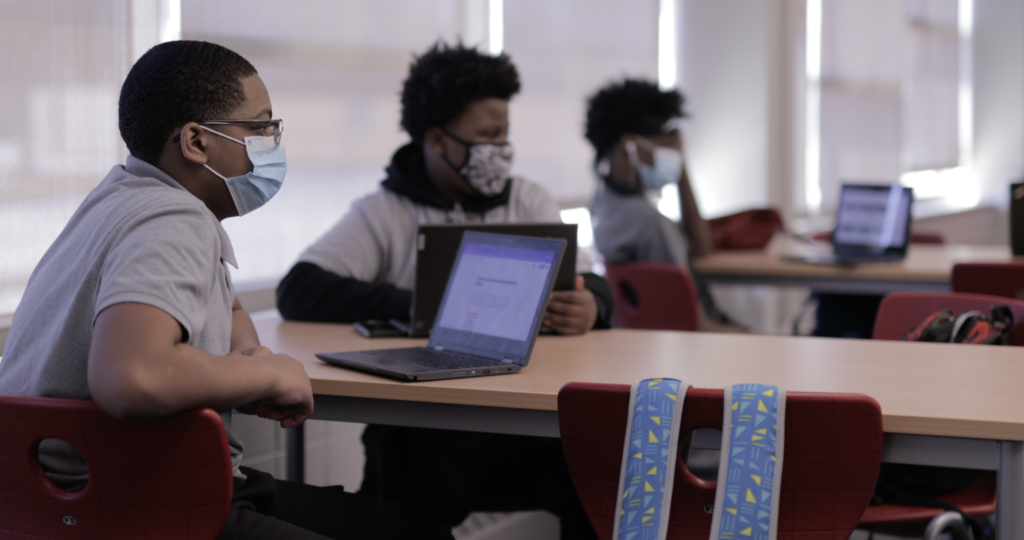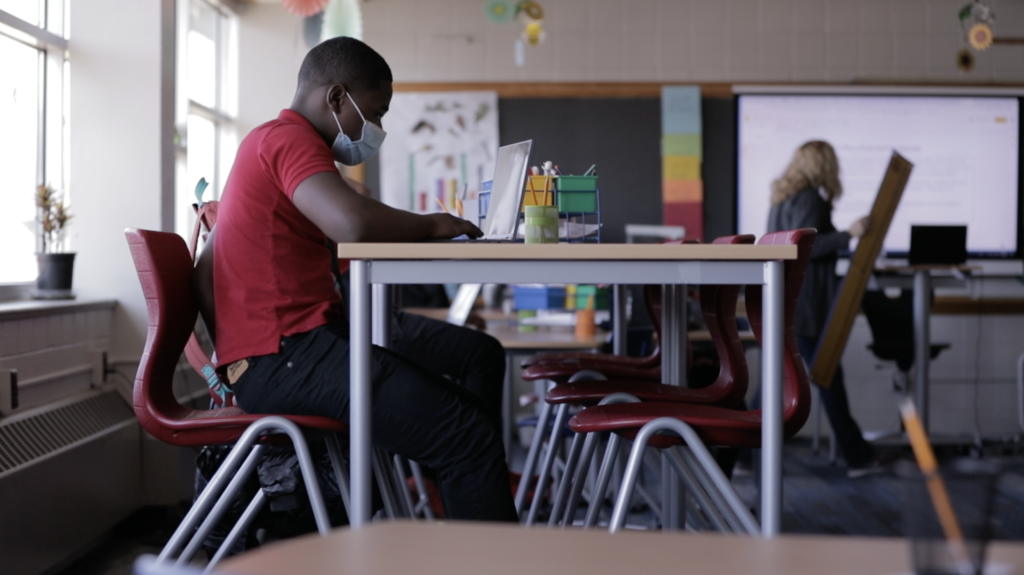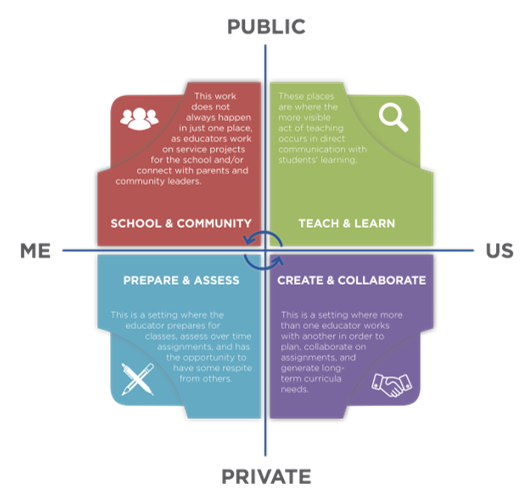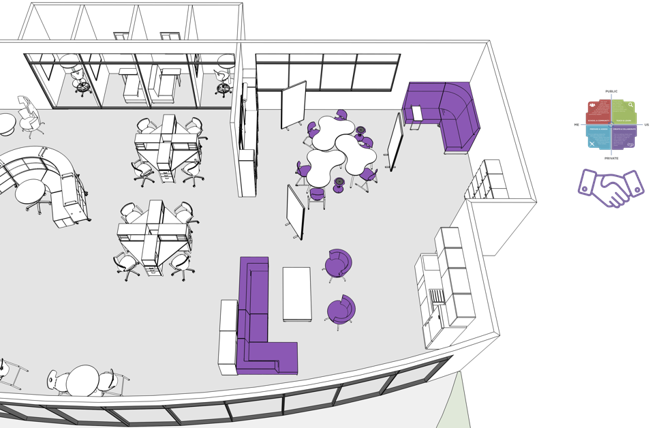Note: All graphics drawn by author and illustrated by VS America, Inc.
COVID-19 played havoc with the delivery of education at all levels of this industry’s spectrum across the world. Pre-pandemic there had been a small advancement into a move from a passive delivery model for learning to one an active one — where students ‘own their own knowledge making.’ This article is shared in the hopes that a post-pandemic world will address some long-delayed needs for educators.
For decades knowledge (i.e., content) was delivered by content experts (e.g., teachers/faculty). The delivery method by in large has been the Instructivist Method — didactic/lecture. This method is opposite of an active learning experience and is considered a passive one (i.e., “Knowledge is transferred to the student. The responsibility for learning using this method (Instructivist) is with the instructor”). The design of the built space supported this delivery method and its solution is often referred to as Henry Ford’s ‘factory model’ with row-by-column seating for students all facing forward, and the teacher at the front lecturing at the ‘micro level’ or classroom. The overall building designs, or ‘macro level’ was called a ‘double-loaded’ corridor with two rows of classrooms separated by a large hallway or corridor.

In the last decade design was changing for learning spaces along with the teaching practices. For design this change meant re-thinking of the learning place, or classroom. The change was intended to move from a ‘my classroom’, to a ‘we classroom’ — multiple educators working in the same area with shared breakout spaces, or different settings within the same space. The latter allowed for more student agency and active learning practices. All was well and good, however many educators in the K-12 arena found that the move from ‘me’ to ‘we’ meant personal possessions had nowhere to live. The multiple aspects of the ‘work of pedagogy’ were not addressed. This work might include: curriculum development, material preparation, development of rubrics/assessment tools, connecting across disciplines to generate content-specific activities, grading papers, and working for the community in parent/teacher association endeavors, or meeting with parents, and the list goes on. Spaces once designed for educators to congregate to say have lunch or maybe relax now also provided much needed extra office ‘touch-down’ spaces. It also found educators trying to work together more collegially, with nowhere to do this type of connected work.
When we design intentionally to support the full spectrum of the ‘Work of Pedagogy’, we enable teachers to thrive in their chosen profession. When they thrive that essence transfers to their students.
Evidence has shown that when teachers thrive students do as well. Perhaps it is time to really begin to design for the educator and not just the student. The work of pedagogy is multifaceted (as shared above), and just as work in the workplace has been analyzed in order to apply the best design solutions, it is argued here that same approach should be made for the work of educating. To begin, designers need to start with the right question(s). Some starting questions might include:
- What places are currently provided for educators only?
- What is/was their intention?
- How are they currently being utilized, if at all?
A series of follow up questions might help educators become aware of their own need to work collegially across departments, and/or disciplines to support the work of pedagogy. If you were to reimagine how you work with other educators:
- What types of work would you engage?
- What types of spaces, and/or affordances would support these endeavors?
- What types of spaces do you need for: yourself/respite; one-on-one with students or parents; Preparation/Assessment
- What kind of time frame does each require?
Do you see where I am leading? It is this author’s belief that educators don’t even know what types of spaces could work for them as they have been using the same spaces over and over again with no new intentional thinking. Design can and should help.
In a presentation given in 2020 for EDspaces, I provided some ideas for how to think through these work needs and that information is shared next.
The Fundamentals
When we design intentionally to support the full spectrum of the ‘Work of Pedagogy’, we enable teachers to thrive in their chosen profession. When they thrive that essence transfers to their students. It’s not enough to provide a break room. Understand this work of pedagogy in its full spectrum, and design intentionally to support it all.

There is a rhythm of learning and it doesn’t just start and stop at the morning and afternoon bells. It lives across all aspects of one’s day and evening. For educators it often runs into their weekends, nights, and certainly summer. Learning is experienced through multiple sensory inputs (i.e., the 5 senses, 600+ muscles, and the inner-ear/balance), and therefore making those experiences count for students is what keeps them engaged whether onsite or online.
Applying a mode of work generated for the workplace might provide a model to think about the specific needs of educational work. The 5 Work Modes supporting productive, psychological comfort include the ability to: (1) Focus, (2) Socialize, (3) Collaborate, (4) Create, and (5) Rejuvenate.
The next set of diagrams works to distill this information provided from the workplace into the education-place (see figure 1).

Figure 1. The Work of Pedagogy (with permission from author, EDspaces presentation 2020)
It’s not as simple as showing up for class and teaching. There are at least four other aspects of working as an educator and each is better served with functional space: (1) School & Community, (2) Teach and Learn, (3) Prepare and Assess, and (4) Create and Collaborate. The two-by-two matrix also indicates a need for the “me” and “us” as well as “private” and “public” situational needs. For educators to thrive, the work of pedagogy must have places designed to support these multifunctional needs. As designing to support for the community as well as the teaching and learning spaces have been well documented, this article will focus on the bottom two quadrants. The next figure (see figure 2) shares an idea of how users and designers might think about these two places.

Each of the next two quadrants (see figures 3 & 4) show exploded view planes with some added research insights for why items where generated.

Research Insights/Guidelines for Retreat & Focus include:
- choice & control
- heads down focus
- online learning options [preparation & delivery]
- personal storage
- shared library
- postural changes
- digital & analogue
- lighting controls
- acoustic controls

Research Insights/Guidelines for Create & Collaborate include:
- choice & control
- group work areas
- maker place
- coffee/lunch
- thinking out loud
- postural changes
- digital & analogue
- lighting controls
- acoustic controls
- access to nature
It is hoped that by sharing some insights/guidelines for thinking about the ‘work of pedagogy’, advances can be made for the other types of work, work needs, collaboration needs, etc. to ensure educators are made aware of the opportunities spatial designs may offer in support of these well-defined work needs.

